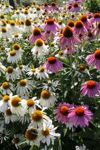Notice (8): Undefined index: geoplugin_countryCode [APP/Controller/AppController.php, line 94]Code Context$Country_code = '';if($ip_data && $ip_data['geoplugin_countryCode'] != null) {$Country_code = $ip_data['geoplugin_countryCode'];$client = null $forward = null $remote = '216.73.216.189' $ip = '216.73.216.189' $ch = unknown $ip_data_in = '{ "geoplugin_status":429, "geoplugin_message": "Blacklisted due to sending too many requests to geoplugin.net. Consider whitelisting your IP or domain", "geoplugin_url": "https://www.geoplugin.com/premium/" } ' $ip_data = [ 'geoplugin_status' => '429', 'geoplugin_message' => 'Blacklisted due to sending too many requests to geoplugin.net. Consider whitelisting your IP or domain', 'geoplugin_url' => 'https://www.geoplugin.com/premium/' ] $Country_code = ''App\Controller\AppController::initialize() - APP/Controller/AppController.php, line 94 App\Controller\ProductsController::initialize() - APP/Controller/ProductsController.php, line 31 Cake\Controller\Controller::__construct() - CORE/src/Controller/Controller.php, line 273 ReflectionClass::newInstance() - [internal], line ?? Cake\Http\ControllerFactory::create() - CORE/src/Http/ControllerFactory.php, line 47 Cake\Http\ActionDispatcher::dispatch() - CORE/src/Http/ActionDispatcher.php, line 91 Cake\Http\BaseApplication::__invoke() - CORE/src/Http/BaseApplication.php, line 235 Cake\Http\Runner::__invoke() - CORE/src/Http/Runner.php, line 65 Cake\Http\Runner::__invoke() - CORE/src/Http/Runner.php, line 65 Cake\Http\Middleware\CsrfProtectionMiddleware::__invoke() - CORE/src/Http/Middleware/CsrfProtectionMiddleware.php, line 104 Cake\Http\Runner::__invoke() - CORE/src/Http/Runner.php, line 65 Cake\Http\Runner::run() - CORE/src/Http/Runner.php, line 51 Cake\Routing\Middleware\RoutingMiddleware::__invoke() - CORE/src/Routing/Middleware/RoutingMiddleware.php, line 168 Cake\Http\Runner::__invoke() - CORE/src/Http/Runner.php, line 65 Cake\Routing\Middleware\AssetMiddleware::__invoke() - CORE/src/Routing/Middleware/AssetMiddleware.php, line 88 Cake\Http\Runner::__invoke() - CORE/src/Http/Runner.php, line 65 Cake\Error\Middleware\ErrorHandlerMiddleware::__invoke() - CORE/src/Error/Middleware/ErrorHandlerMiddleware.php, line 96
| Scientific: | Echinacea |
|---|---|
| Other: | Echinacea purpurea - Purpled Cone Flower Echinacea angustifolia - Narrow-leaved purple coneflower Echinacea pallida - Pale purple coneflower |
| Family: | Asteraceae |
Echinacea refers to several species of plants belonging to the Asteraceae family including Purpled Cone Flower (Echinacea purpurea), Narrow-leaved purple coneflower (Echinacea angustifolia) and Pale purple coneflower (Echinacea pallida). Historically all of these species are used in herbal medicine as an immunostimulant but it is unclear which is the best. The German Commission E approved Echinacea purpurea herb as a " supportive therapy for colds and chronic infections of the respiratory tract and lower urinary tract " and also approved Echinacea pallida root as " supportive therapy for influenza-like infections " . However, they did NOT approve Echinacea angustifolia " herb or root " & Echinacea pallida " herb " because clinical trials were lacking for these plant parts. In contrast, King's American Dispensatory (1898) recommends Echinacea angustifolia for " bad blood " resulting in serious bacterial infections (e.g. boils, carbuncles, ulcers, gangrene, typhoid).
Different phytochemical classes such as alkamides, caffeic acid derivatives, polysaccharides, and glycoproteins are believed to be responsible for the immuno-stimulant properties and are found in varying degrees in the different species and parts of the herb. The alkamides concentrated in the roots bind to cannabinoid receptors (CB2) receptors to exert their immunostimulating effects but have no activity on the CB1 receptor, which is responsible for the psychotropic effects of marijuana. Another important immunostimulating phytochemical of this plant is polysaccharides that stimulant interleukins (IL) and tumour necrose factor (TNF).
The findings of the clinical trials are controversial regarding the clinical efficacy of echinacea species for treating colds and flu. Systematic reviews have failed to demonstrate that commercially available echinacea products are likely to shorten the duration or effectively prevent URTI. One recent (2021) study confirmed that Echinacea purpurea (combo of root and herb) helped prevent respiratory tract infections and reduced associated antibiotic usage in children.
Infections
• bacterial infections (chronic and acute)
• upper respiratory tract infections
• sinusitis
• strep throat
• prophylactic colds and flu
• mononucleosis
• recurrent candidiasis
• vaginosis
• candida
Integumentary
• warts (internally)
• carbuncles, boils (topically)
• poor wound healing
• leishmaniasis
Cancer
• adjuvant therapy (controversial )
• Immunostimulant
• Immunomodulator
• Antibacterial
• Depurative
• Anticancer
• Antiinflammatory
• Vulnerary
• Sialagogue
• Alkamides
• Caffeic Acid Esters (Echinacoside)
• Polysaccharides
• Pyrrolizidine Alkaloids (Trace )
• Tincture (1:5 40% EtOH) 1-4 ml tid
• Liquid extract (1:1 45 EtOH) 0.5-1 ml tid
• Decoction: 1-2 tsp root tid
• Autoimmune - theoretical risks associated with its use in autoimmune diseases, allergies and asthma; however no
• Immunosuppressive drugs - best to avoid due to theoretical interaction.
• Breast cancer - may increase survival time for breast cancer patients
Barnes J, Anderson LA, Phillipson JD. Herbal Medicines, 3rd ed. London: Pharmaceutical Press, 2007.
Bone K. Principles and Practice of Phytotherapy. Edinburgh: Churchill Livingstone, 2000.
Bone K. A Clinical Guide to Blending Liquid Herbs: Herbal Formulations for the Individual Patient. St Louis, MO: Churchill Livingstone, 2003.
Brinker F. The Toxicology of Botanical Medicines, 3rd ed. Sandy, Oregon: Eclectic Medical Publications, 2000.
Felter HW, Lloyd JU. King's American Dispensatory. 1898. http://www.ibiblio.org/herbmed/eclectic/kings/main.html. Accessed: August 19, 2006.
Hoffman D. Medical Herbalism. Rochester, Vermont: Healing Arts Press, 2003.
Weiss RF. Herbal Medicine. Beaconsfield, England: Beaconsfield Publishers Ltd, 1988.
Williamson EM, ed. Major Herbs of Ayurveda. Edinburgh: Churchill Livingstone, 2002
Disclaimer: This content is subject to change. The information is intended to inform and educate; it does not replace the medical evaluation, advice, diagnosis or treatment by a healthcare professional. www.nhpassist.com © 2014 NDAssist Inc. and/or its affiliates. All rights reserved.

|
Echinacea
SummaryEchinacea refers to several species of plants belonging to the Asteraceae family including Purpled Cone Flower (Echinacea purpurea), Narrow-leaved purple coneflower (Echinacea angustifolia) and Pale purple coneflower (Echinacea pallida). Historically all of these species are used in herbal medicine as an immunostimulant but it is unclear which is the best. The German Commission E approved Echinacea purpurea herb as a " supportive therapy for colds and chronic infections of the respiratory tract and lower urinary tract " and also approved Echinacea pallida root as " supportive therapy for influenza-like infections " . However, they did NOT approve Echinacea angustifolia " herb or root " & Echinacea pallida " herb " because clinical trials were lacking for these plant parts. In contrast, King's American Dispensatory (1898) recommends Echinacea angustifolia for " bad blood " resulting in serious bacterial infections (e.g. boils, carbuncles, ulcers, gangrene, typhoid). IndicationsSign in requiredActionsSign in requiredConstituentsSign in requiredPosologySign in requiredSafetySign in requiredReferencesSign in required |
|---|